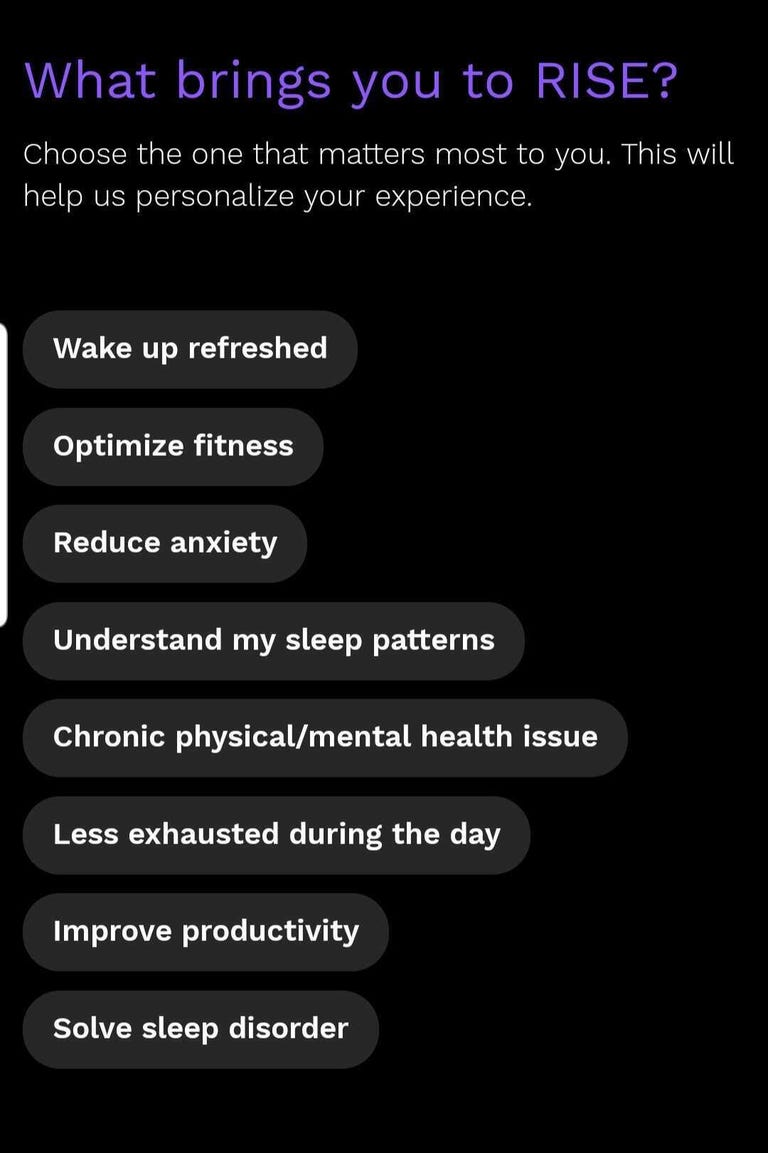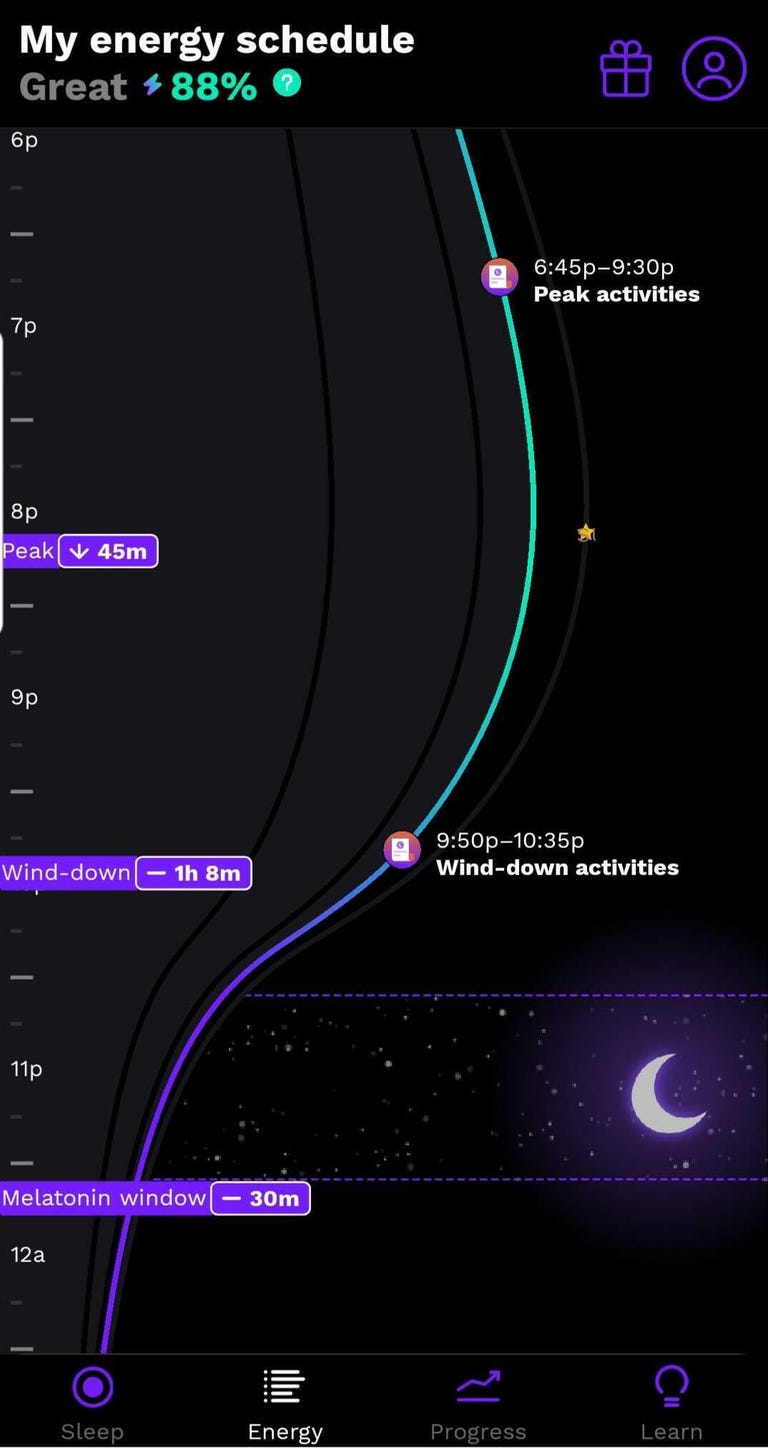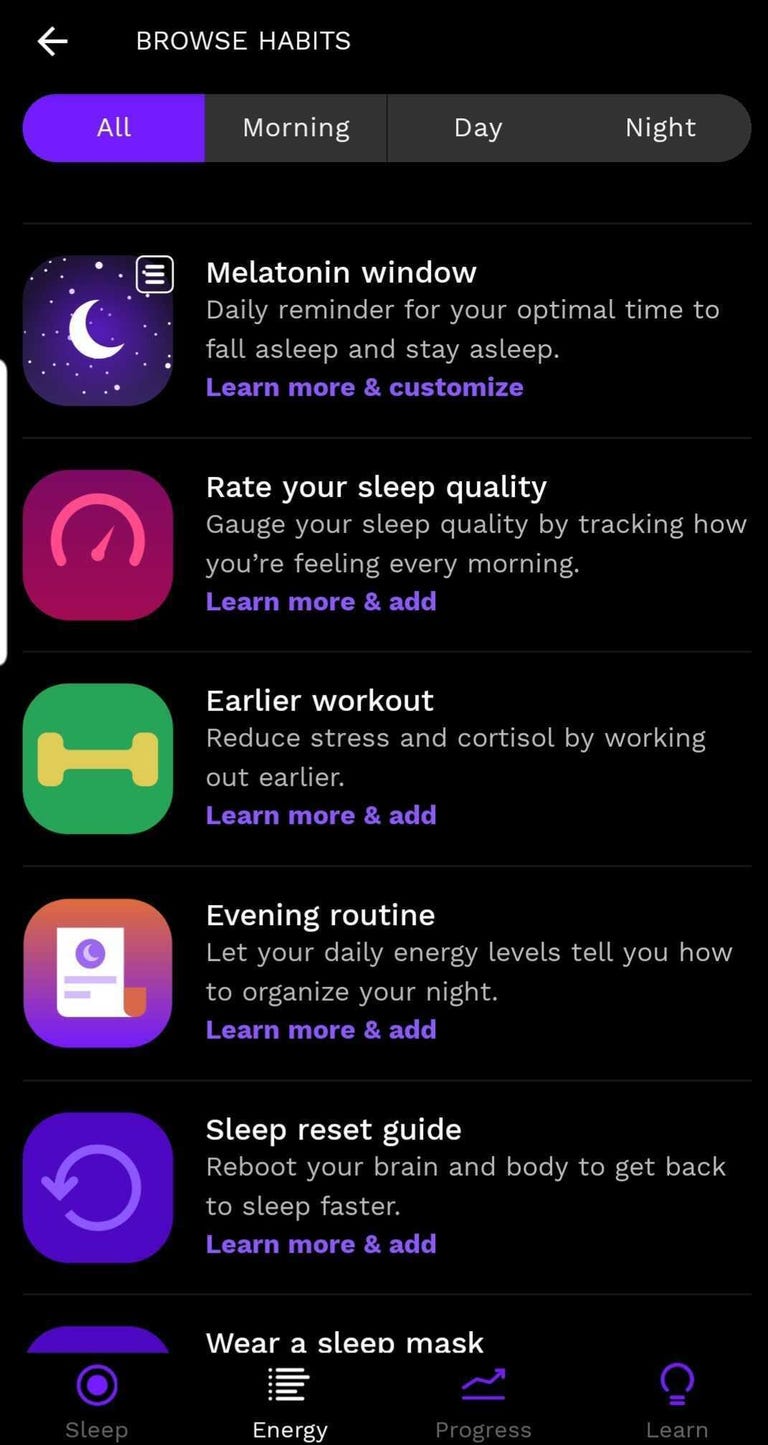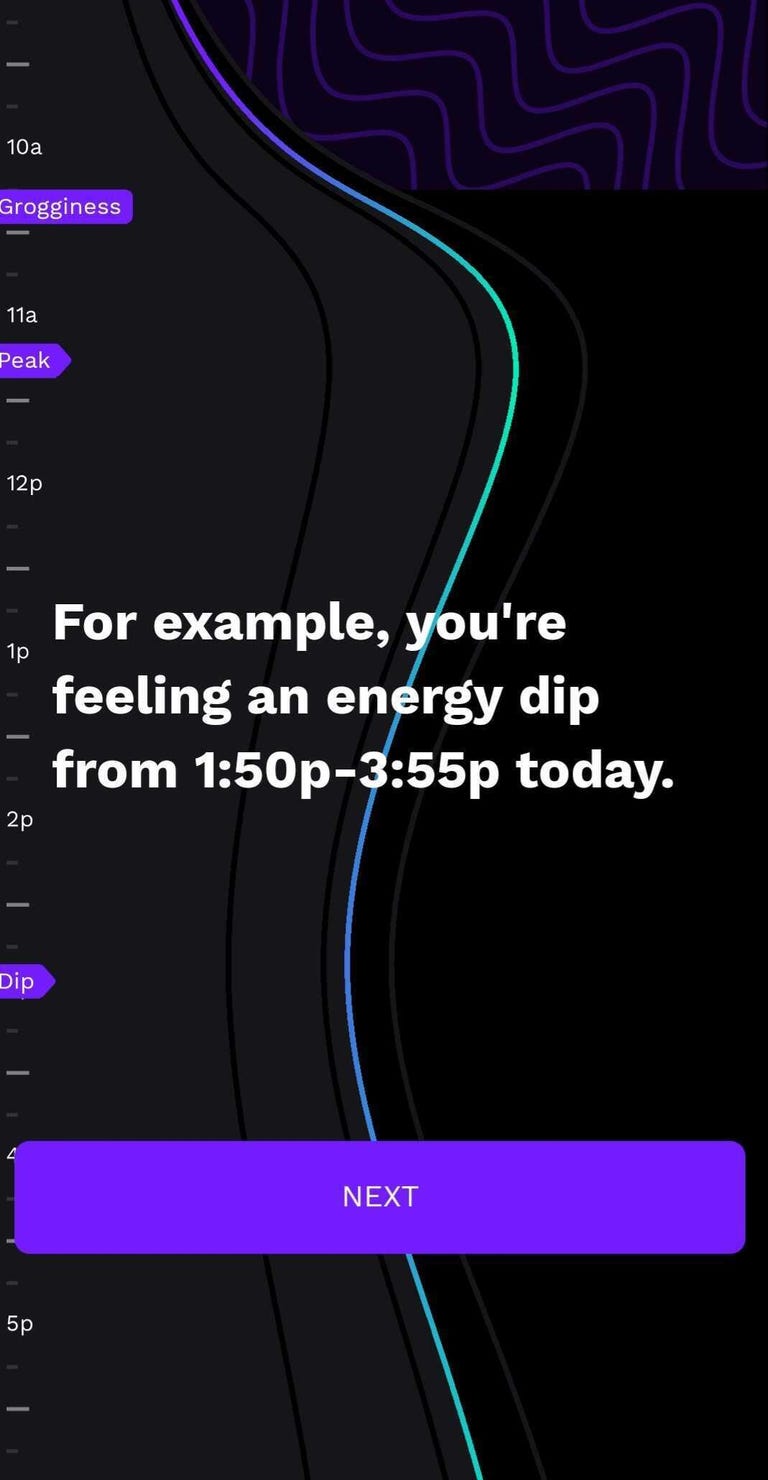Our desire to sleep better has been channeled into thousands of apps that are designed to help us do just that. I’m no stranger to tracking sleep data and testing sleep products. So I know that while some sleep apps work, others are superficial and don’t provide anything helpful. But when the Rise Science sleep app came across my desk, I was eager to check it out.
The concept of the Rise Science app is based on improving your sleep by monitoring sleep debt and energy levels. According to Rise, people get used to the feeling of being sleep-deprived and accept it as part of their lives. By using the app, Rise says, you’ll improve your life performance because you’ll be more mindful of your sleep debt.
Those are big claims that I wanted to put to the test. To get to the bottom of this app, I tested and analyzed its offerings, performance and usability. Here’s my Rise Science app review.
What is the Rise app?
Rise by Rise Science is an app that tracks energy and sleep but doesn’t have its own physical tracker that you wear. Instead, the app accesses your existing health apps, like Google Fit or Apple Health, and then uses its proprietary models to make its recommendations for your sleep.
I know what you’re wondering: How does it work without a wearable tracker? Rise operates on the concept that people use their phones right before they go to bed and when they wake up. So instead of you having to wear something, it can track your sleep based on your phone movement and daily steps. This pattern of phone use may be true for most people, but I don’t like to leave any gray areas, so I opted to pair Rise with my Fitbit Inspire, which is how I usually track my sleep data. You can pair the app with your wearable device — an Apple Watch, a Fitbit, an Oura Ring.
The Rise sleep app aims to help with two main metrics: your sleep debt and your energy schedule. Sleep debt is shown in hours and represents how much time you owe your body. The energy schedule uses your body’s circadian rhythm to predict peaks and lows in energy throughout your day. The app establishes how much sleep you need based on 14 previous nights of sleep data.
Who should use Rise:
- People who want to focus on clearing out sleep debt and sleeping more at night.
- Folks who want to maximize their energy levels throughout the day.
- Folks who want help establishing new habits. The “habits” feature of the Rise Science app was particularly helpful.
Who shouldn’t use Rise:
- People who want an app that includes an extensive catalog of sleep songs, white noise or meditation resources.
- Those who want an in-depth analysis of each night’s sleep levels.
Rise Science app setup
As with most apps, the Rise setup was seamless. You’re served questions and prompts that help the app get to know you and your sleeping habits. During the process, you’re asked about your age, regular weekday sleep schedule and goal for the app.

Here are the selections for choosing a goal for using the Rise app.
Personalization isn’t new; nearly all apps nowadays do it. What’s different about Rise is that while setting it up, you’re allowed only one thing that matters most to you. That caught me a little off guard, given how interrelated our habits are, especially in the case of sleep. The sleep we get affects everything from our heart health to our fitness levels to our mental health. To be able to choose only one was difficult.
For example, if you’re a person with anxiety who’s also trying to boost your fitness, which do you pick? Not to mention that the “reducing anxiety” and “chronic mental health issue” options could be strikingly similar. Mental health conditions often coexist, so getting two options like this was a little confusing. How do you know if anxiety is included in the mental health option, or if by not choosing anxiety specifically, you’ll get any advice for anxious feelings?
For the sake of this review, you should know that I chose the “optimize fitness” selection.
How much does the Rise app cost?
You can now subscribe to Rise for $69.99 per year, with a seven-day free trial. That shakes out to about $5.83 a month. This is in line with the average cost of sleep apps on the market, although note that there’s no monthly payment option.
According to the app, you’re emailed before your free trial is up, which is much more than I can say for several other apps I’ve accidentally paid for.
Rise app performance and usability
The Rise app is a lot. It isn’t inherently difficult to use, but it displays information in a unique way (scrollable line graphs and bar charts). It’s more interactive than other apps I’ve tested, which took me some time to wrap my head around.
The Rise sleep app looks different than other apps, but after the first few days, it does become more familiar and easier to use. The navigation bar is at the bottom of the screen and points to four sections: sleep, energy, progress and learn.
Sleep
The meat of the sleep tab is the sleep debt graph. During my time testing the Rise app, my sleep debt fluctuated. It never got to zero. Rise Science acknowledges that it isn’t realistic for people to expect to have no sleep debt, and it advises users to try to keep it under five hours for peak performance.
Other features under this tab include how long you slept the night before, any naps you took and a rating section for how you felt in the morning.
Energy

The graph that displays your energy schedule each day includes markers for your energy peaks and dips.
The energy tab is the most unique part of the Rise sleep app. The line graph for the energy schedule reminds me of old-school continuous-form paper because you scroll from top to bottom. The line moves across the screen with your energy peaks and dips.
Progress
The progress tab on the app looks the most like other sleep apps. At the top of the page, you can toggle through three different graphs: your sleep/wake times, sleep debt and sleep quality.
Learn
One of the places that Rise Science shines is the learn section. Fifteen educational pages help you understand the concepts that the Rise App uses.
Read more: CNET Wellness Editors Reveal the 9 Ways They Get Quality Sleep
Rise Science app best features
Rise is one of those apps that require you to put in a lot of information to get any real use. If you don’t interact with it, the output will be limited. Several aspects of this app impressed me and set it apart from other sleep and meditation apps.
Data presentation
The Rise app offers a fresh way to look at sleep data. The energy schedule tab was my favorite based on uniqueness alone. There were plotted points showing when my energy would peak or dip and when I should fit in my demanding activities or my wind-down routine.
Habits

Users can choose from several habits available in the Rise sleep app.
During setup, you can add “habits.” There’s a whole list, including establishing an evening routine and working out earlier.
It’s additional info you can provide the app, which can then remind you to get ready for bed or exercise. Essentially, this is meant to help you build healthier habits surrounding your sleep quality.
I was particularly impressed by the habit of establishing a routine. The internal clock of the body is called the circadian rhythm. It’s regulated by melatonin, which you can naturally increase in the brain by establishing a nighttime routine conducive to sleep. Rise can help you form that nighttime routine.
Educational content
I’m not saying I’m obligated to give Rise points for having a good educational section, but it did impress me. Sleep is a really big topic, with hundreds of subtopics that can create a confusing, hard-to-manage web of information. Rise’s educational section gives the app context that’s invaluable if you’re trying to get the best out of your experience.
I also got regular email updates from Rise Science while I tested the app. They were long, rich emails that had a lot of useful information. It was a lot to read, and many people might skip them, but I appreciated that the info was available to me.
Things to consider about the Rise Science sleep app
Notifications
Rise is an extremely robust app that can give you lots of data about your energy levels. The downside to this is that you get a ton of notifications. After the first few days, I found this particularly frustrating because I don’t like things hanging around in my phone’s notification bar. So having the fixed Rise logo in my notification bar was annoying.
For my Galaxy phone, the other push notifications from Rise would stack below the constantly running notification, which meant I didn’t always catch when a new one popped up. So Rise’s time-sensitive notifications were lost. Also, if you accidentally swipe one away, you can’t go to the app to see what it says. Or at least, not that I could find.
Peak energy levels
I enabled peak and dip energy notifications to track my energy throughout the day. They’re meant to help you plan your day around your energy levels.

It seems harmless enough, but I couldn’t help but wonder if the notifications could become a self-fulfilling prophecy of feeling more tired and unproductive because you see your projected energy levels dipping. On the flip side, seeing that I was at peak energy was a little frustrating when I was at work, unable to use that extra energy I was supposed to have. These things run counter to what the app stands for, namely that knowledge of your energy levels and sleep habits will help you realize your fullest potential.
As with any sleep app, you can get discouraged when you can’t take advantage of your energy spikes or when you still have sleep debt when you’re trying to eliminate it.
Rise doesn’t track as much
The Rise sleep app has a ton to offer, but there are a lot of gaps, with a lack of info on things other apps track. If you want granular data into your heart rate, oxygen levels and sleep stages, then Rise isn’t for you.
The lack of data on sleep stages surprised me. Rise says on its website, “We strongly believe it’s not beneficial to monitor sleep stages. The bottom line? We don’t believe it will help you become a better sleeper or feel better.”
This goes against the advice I give readers and what I’ve learned during my time covering sleep. That said, if your main goal is to track your sleep debt and energy, you don’t need information about your sleep stages. If you connect a sleep tracker, you can have access to this information. If not, just know you won’t get that from Rise.
What does the Rise app do with your data?
With any app, privacy is a top concern. Rise Science’s privacy policy varies by country, based on legal practices and requirements for each area. You can see a step-by-step breakdown of what Rise collects as users interact with the app.
Rise Science says it doesn’t sell your personal data. Your information may be shared with service providers (payment processors and text message services), professional advisors, government agencies and business transferees during the “ordinary course of business.” Essentially, anyone who helps Rise do business, or provides services on Rise’s behalf, may have access to your data.
You have the choice to update your information at any time. You can block marketing communications and push notifications and opt out of tracking by blocking cookies. Rise Science keeps your data for as long as you have an account. You should know that even after you delete your account, Rise Science says, “personal data will be retained for a reasonable period following account deletion.”
Final verdict: Is the Rise app worth it?
The Rise Science app is one of the most unique sleep apps I’ve tested. Not only is the information displayed in a fresh way, but I appreciate the supplemental information that’s available to readers. Everything Rise displays or analyzes is explained within the app.
So yes, this app is worth it, but only for certain people. The Rise app is hyperfocused on two goals: minimizing sleep debt and maximizing energy throughout the day. If you want more information about how you’re sleeping, you’re better off with another app. You won’t have access to your oxygen levels, time spent in sleep stages or sleep quality.
After a few weeks of using the Rise app, I successfully cut down on my sleep debt. I don’t directly attribute that progress to all the notifications regarding my energy levels, it was helpful to think about how much sleep I owed my body. That helped me get in bed a little earlier most nights. As for whether I’ve optimized my fitness because of using Rise, the jury is still out.
It’s a good app, although it has a limited scope when it comes to what it tells you about your sleep habits.





